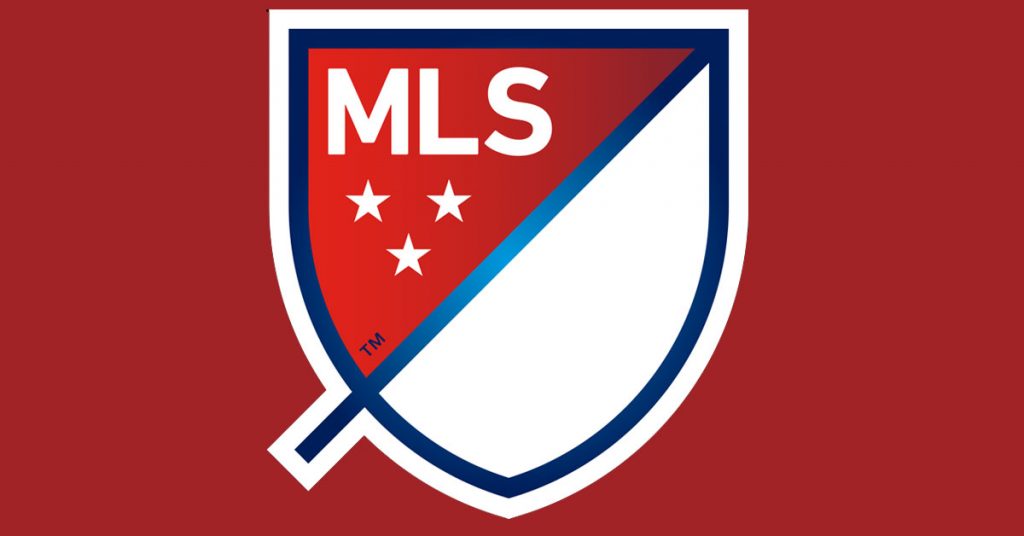Authority Soccer (authoritysoccer.com) is a participant in the Amazon Services LLC Associates Program, an affiliate advertising program designed to provide a means for sites to earn advertising fees by advertising and linking to Amazon.com. This site also participates in other affiliate programs and is compensated for referring traffic and business to them.
The introduction of a salary cap into professional sports like Major League Soccer (MLS) has been a contentious matter in recent times. In the U.S, the method of paying players salaries is different from what is obtainable in the European Championship.
For instance, in European Leagues, football clubs are responsible for paying their player’s salaries.
Yet, in the MLS, the league management decides how much each team is expected to pay for their entire squad. For such, specific rules apply.
So, what is a salary cap? What are the rules and regulations guiding its implementation in major league soccer?
The salary cap in major league soccer is the budget allocated to each team. For the 2019 season, the MLS salary cap was pegged at $4.24m, equivalent to £3.2m.
In the MLS, the negotiation for salary cap for each season is always decided by league officials and the MLS player’s union.
While the league management pegs the benchmark on club expenses, each team decides the amount payable to players on their roster.
For example, in 2019, Zlatan Ibrahimovic earned $7.2m as salary for the 2019 MLS season. This was after the MLS player announced a revised pay for the 2019 season.
This indicates that aside from the league management, the MLS player union plays a decisive role in payment figures. The MLSPA usually engages the league management every five years to negotiate on player salary. Talks especially players’ pay, benefits, and workers’ rights.
While the MLS follows global football rules, however, it maintains a different approach in players’ salary payments. I have brushed on this a bit so far.
Stick around to find out the various aspects of the MLS salary cap and how the rules are being implemented.
What is the MLS Salary Cap?

In professional sport, a salary cap is usually an agreement between various stakeholders. The aim of implementing a salary cap is to place a minimum and maximum limit each club can spend on each player on the payroll or their entire roster. In some cases, it covers both.
In the MLS, the benchmark each clubs pay to their player is based on the league management guideline. Although the player’s union also influences the decision by reaching an agreement with league management.
The salary cap in MLS refers to the budget each team is allowed to spend on their roster for each season. However, the payment method is not static.
It can be reviewed every five years through negation between the MLS player’s union and the league management.
For instance, the salary cap for the 2019 season was $4.24m, while that of the ongoing 2021 season is $4.9m.
According to a report from the league management, the salary cap for the 2022 season will be $4.9m, the same as the 2021 season.
Based on the MLS rules and guidelines, a team is not expected to spread the budget evenly on each player on their roster. However, it is expected that every club must have a provisional budget for at least 18 to 20 players.
For example, the 2019 salary was pegged at $4.24m, representing the maximum each club can spend on their entire squad. So, if this amount will be shared evenly, each player will receive a net salary of $212,000 annually, which is equivalent to $4,000 weekly.
With this arrangement, each player will earn the same amount whether they play or not. But, this sport is highly competitive.
Therefore, the league management made provision for a different salary structure. This will help in accommodating special acquisitions by clubs.
To signify flexibility on the cap rate, the league management increases the general allocation money (GAM) from $500,000 in 2019 to $1.5m in 2021. The GAM is the maximum each club can spend on an individual player per annum.
The Targeted Allocation Money is the cap each club can spend on special acquisitions or player’s raises due to improved player performance.
So, salary cap, GAM, and TAG are instruments used to control club finances by the league management.
Why Does MLS Have a Salary Cap?
The rationale for introducing a salary cap in MLS is to prevent clubs from overspending on players.
In addition, the league management aims to ensure that the operational cost of each club proceeds from their direct earnings. It deters wealthy sponsors from interfering in the club management.
With the salary cap in place, clubs plying their trade in the MLS can run a uniform checkbook. This policy makes it possible for the league management to monitor club finances effectively. They can quickly identify foul play, especially in monetary aspects.
Also, the league management uses a salary cap to promote healthy competition. With this, clubs have a level playing field with each other.
For example, without a salary cap, Sporting Kansas City won’t be able to compete with Atlanta United if the two clubs are interested in signing a player. The latter has a better financial prowess that could come into play.
MLS Salary Cap Rules

United States Soccer Federation is the apex football body representing football at the highest body in the United States. The body is also saddled with the responsibility of setting the rules guiding MLS activities.
As part of its responsibilities, the body set the salary cap framework, binding on all the clubs. For instance, in the 2019 season where the salary cap was $4.24 million per team.
This stipulates that each team is expected to budget on a minimum of 18 players and a maximum of 30 senior players on their respective rosters.
Based on this rule, no individual player can earn beyond $530,000 per annum. This rule is also applicable to all players, either domestic or international players. Since the league comprises 26 teams, the total players eligible to play in the league during each season stand at 780.
Now, there is the position of foreign players eligible to play in the league. The rule is that each team is expected to begin its inaugural season with eight foreign players.
However, the league also has a rule that allows clubs to trade roster slots. So, while some clubs may have more than eight foreign players, some may have fewer.
In addition to the club salary budget for each season, each team can spend additional funds on player compensation. This includes money from the discretional amount from Targeted Allocation Money and league-wide allocation pool.
There is also the cost on the U22 initiative outside the salary initiative, and supplementary roaster.
MLS Salary Cap Regulations
MLS salary cap regulations for the 2021 salary cap grant club the permission not to add players’ salary on the Supplemental Roaster slots from 21 – 30 in the team salary budget.
The regulation provides that each team must have no more than ten registered players on its supplemental roaster.
In addition, the number of players on each club Supplemental Roaster is subject to the injury list, loan expectation, and season-long injury.
Also, all Generation Adidas players with Adidas contracts are Supplemental Roaster players during the initial guaranteed term stated in their agreement.
The slot range within 21 – 24 may be filled with a senior player with a minimum salary of $81,375. The player must be eligible for the MLS SuperDraft, Generation Adidas players, or homegrown players whose incomes are above the Senior Minimum Salary subject to the homegrown subsidy.
Aside from the Supplementary Roaster, players from slots 1 to 20 count against the club’s salary budget of $4,900,000.00. Interested clubs may choose to spread their Salary Budget on 18 Senior Roaster players.
However, there is a minimum Salary Budget Charge against clubs with unfilled senior roasters below the statutory minimum 18 senior roaster slot.
A club can register up to 30 players, but the MLS salary regulation only permits 20 players on each club senior roaster.
This is subject to loan expectations, injury list, and season-ending injuries. Also, the maximum Salary Budget for a single player is pegged at $612,500.
Does MLS Have a Hard Cap?
In the MLS, there is a maximum amount a club can spend on their entire squad. Aside from the team general roaster, the MLS also has a hard cap on how much a team can spend on a single player per annum.
While there is a ceiling on how much a spend can spend each season, there is provision for exceptional cases.
The exception case is that clubs can field players whose salary is above the maximum threshold. These players are known as designated players, and their salary is not subjected to the salary cap.
In recent years, there has been an upward review on how much a club can spend on designated players.
For instance, in 2016, the maximum salary for designated players was $457,000, while the amount was increased to $612,500 in 2020.
So, while the MLS has a hard salary cap in place, the league is also growing. As a result, there has been an improvement in its salary cap on the general team roaster.
There has also been an increase in the maximum amount a football player can be paid per annum.
Will MLS Get Rid of the Salary Cap?

As of today, the salary cap remains part and parcel of MLS rules and regulations, with fines for clubs that break the rule.
However, judging from the recent LA galaxy fine on Matuidi transfer Juventus, I believe the MLS is not ready to ditch its idea on salary cap on club roaster budget or cap on the amount payable to designated players for the time being.
So, instead of abandoning the salary cap idea, MLS management will rather have an upward review of the amount payable to designated and non-designated players and increase the club salary budget.
For the 2021 and 2022 seasons, the league salary cap has been pegged at $4.9 million.
The amount will gradually scale towards $7 million in 2027. In addition, there are plans to increase General Allocation Money from $1.5 million in 2021 to $4 million in 2027.
However, the only notable reduction will be the Targeted Allocation Money which will drop to $2 million in 2027 from an initial $2.8 million in 2021.
What Happens if the MLS Team Goes Over the Salary Cap?
Since MLS has not changed its position on the salary cap, any club that goes against the rules and regulations will be fined.
For instance, David Beckham club, Inter Miami, was fined $2,000,000. Jorge Mas, the club’s managing owner at the time, was also hit with a fine of $250,000. The allegations against him were that he had violated the MLS transfer rules and regulations.
This also rubbed off on Paul McDonough, the former chief operating officer of the club and also a sporting director. He has been suspended through the end of the 2022 MLS season.
The suspension came on the heel of his role in the 2020 transfer of French midfielder Blaise Matuidi from Juventus to his club.
According to the MLS, the reason for the whooping fine was because Inter Miami violated the league salary cap rule. The MLS, in a statement, said Matuidi’s fee was way more than the stipulated amount.
He also emphasized that LA Galaxy, instead of the mandatory three designated players allowed by MLS, had four instead.
Aside from the Matuidi case, the MLS also, through its investigation, discovered LA Galaxy underreported salary amounts for players like Leandro Gonzolez Pirez, Nicolas Figal Julian Carranza.
While the LA Galaxy fine is the biggest to date in MLS history, the league management body also has a track record of dishing out heavy fines to clubs and individuals that undermine salary capping policies.
For example, in 2015, the MLS fined Real Salt Lake owner Dell Loy Hassen $150,000 for his comment on the collective bargaining agreement.
So, going by MLS guidelines regarding salary caps, any team that violates the policy will be fined. However, in most scenarios, the players are usually not affected, provided they have no hand in the deal.
For instance, in the LA Galaxy case, the MLS stressed that the players are not subject to investigation. This means their salary remains an intact and full force.
There is no doubt that Major League Soccer is a highly regulated sport, especially in the area of salary caps. Most people will agree that this helps in keeping some teams from having an undue advantage over others.

